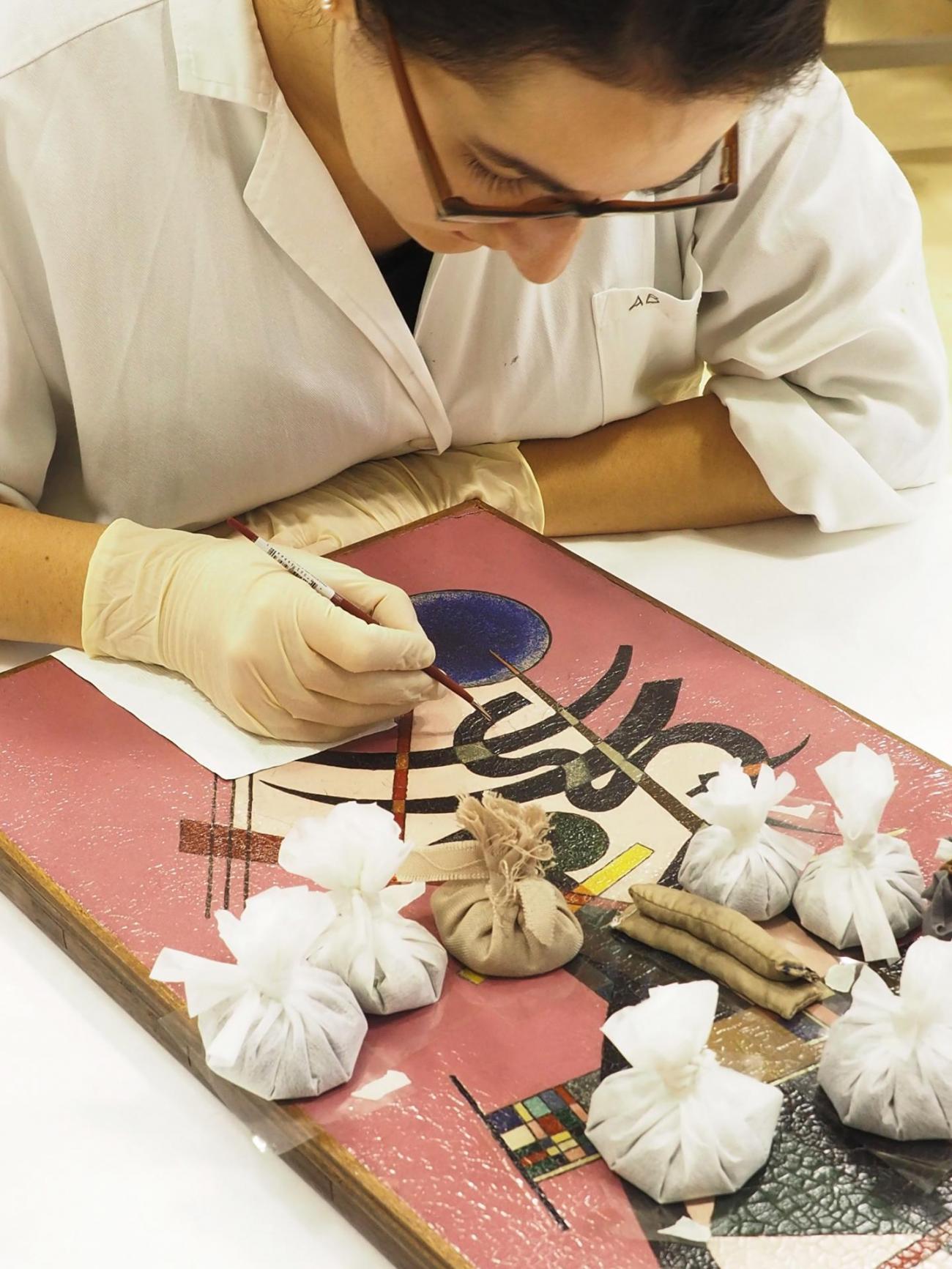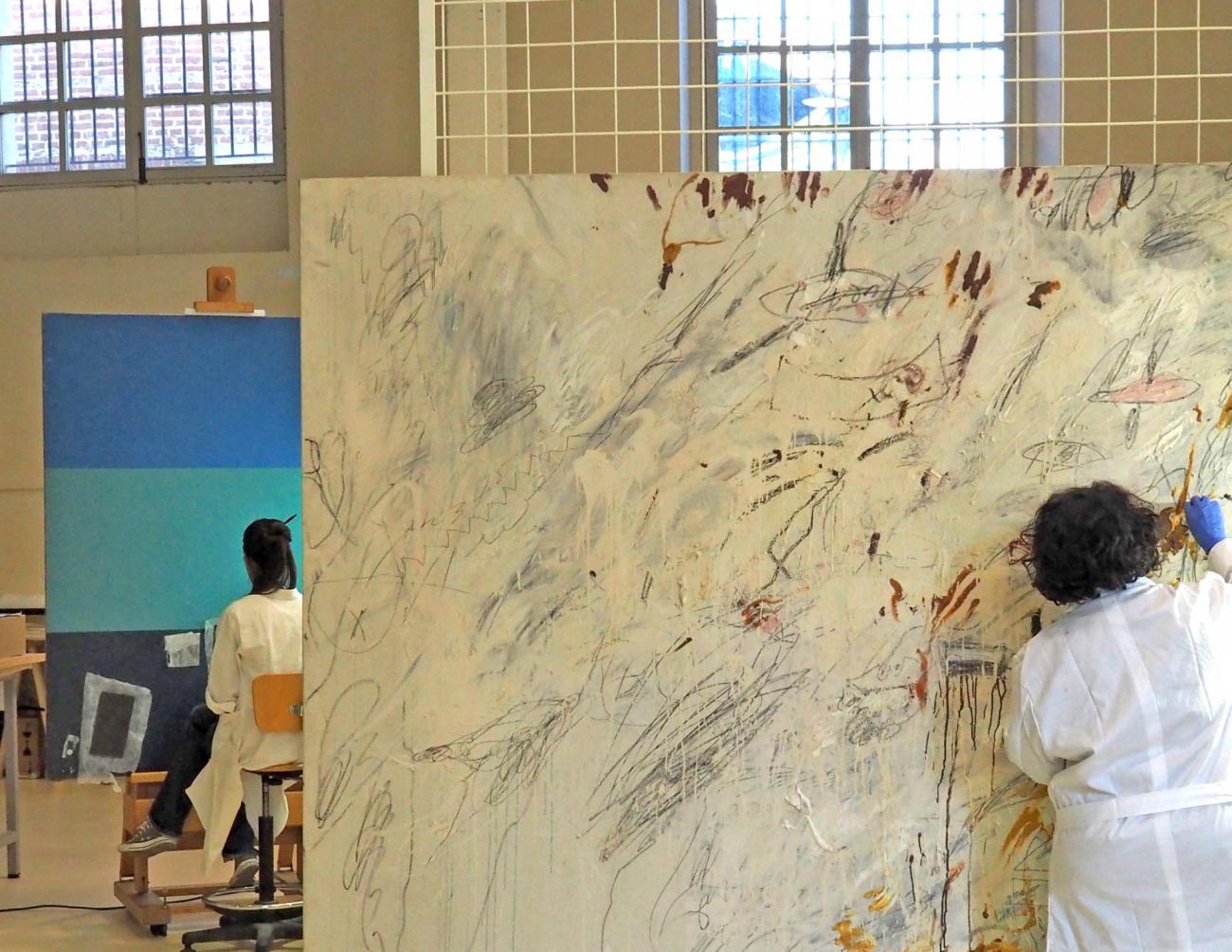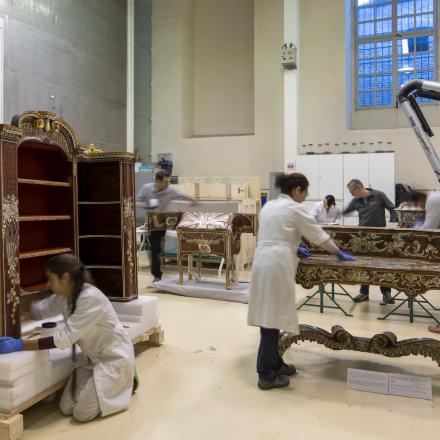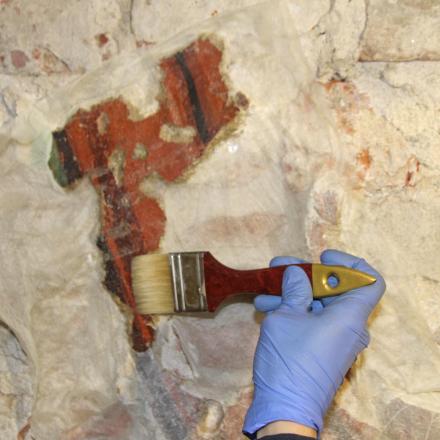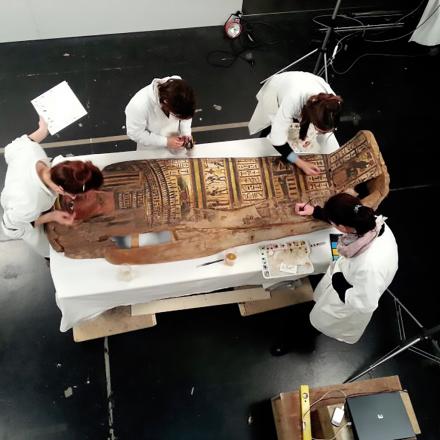The conservation of contemporary artworks requires an across-the-board approach to the various types of materials used, and for this the Centro has set up a specific laboratory that adopts an original approach and working methods, through research, dissemination and training projects.
The professionals from the Contemporary Art laboratory are mostly involved in the study of the materials, the requirements and the means for transferring and exhibiting the works, as well as documenting them, gathering information from historic archives and direct contact with artists, curators, conservers, gallerists and collectors.
Over the years the Centro has gained particular experience in collections of design works, above all through long-term projects conducted with the ADI Foundation on the historic Collection of the Compasso d’Oro.
A specific line of research in this sector is dedicated to Arte Povera, in collaboration with the Castello di Rivoli Research Institute, conducting historic and technical studies on works to recover the tangible and intangible memory linked with the production and exhibition of the works. Updates on the progress of the Arte Povera Domani project are available online.
IDuring the exhibition entitled “Kandinskij, l’armonia preservata. Dietro le quinte del restauro” (Mondovì, Ceramics Museum, 15 November 2018 - 3 February 2019), the Centre’s laboratories had the opportunity to study the work of the celebrated Russian artist, thanks to collaboration with the Municipality of Bergamo, the GAMeC and the support of the Cassa di Risparmio di Cuneo Foundation. The aim of work on Spitz-Rund, an oil painting on card, was to verify the stability of the work in terms of both the support and the painted film. Multidisciplinary studies conducted on the work provided the basis for a more complete understanding of the materials and techniques used by the artist, the original context of the work and the chronology of previous conservation works. Thorough, critical analysis of the work effectively allowed the Centro to determine the most suitable intervention methods and materials.
This is one of the most valuable works in the collection of the GAM in Turin, and has been the focus of great historical and critical interest, and an increasing demand for exhibition since its acquisition. The large scale and the peculiarity of the technique (paint and graphite on canvas with oil, acrylics, wax pastel and charcoal) demanded a global approach to the question of its treatment, with a view to defining the criteria and instruments to allow the museum to monitor the state of conservation of the work and gather more information on its behaviour in various contexts (permanent exhibition, transfer, temporary exhibition). The work, characterised by a long phase of preliminary diagnosis, effectively stabilised the painted layers and improved the structural stability of the support.
The work was executed as part of the Restituzioni 2018 initiative by Intesa Sanpaolo.
